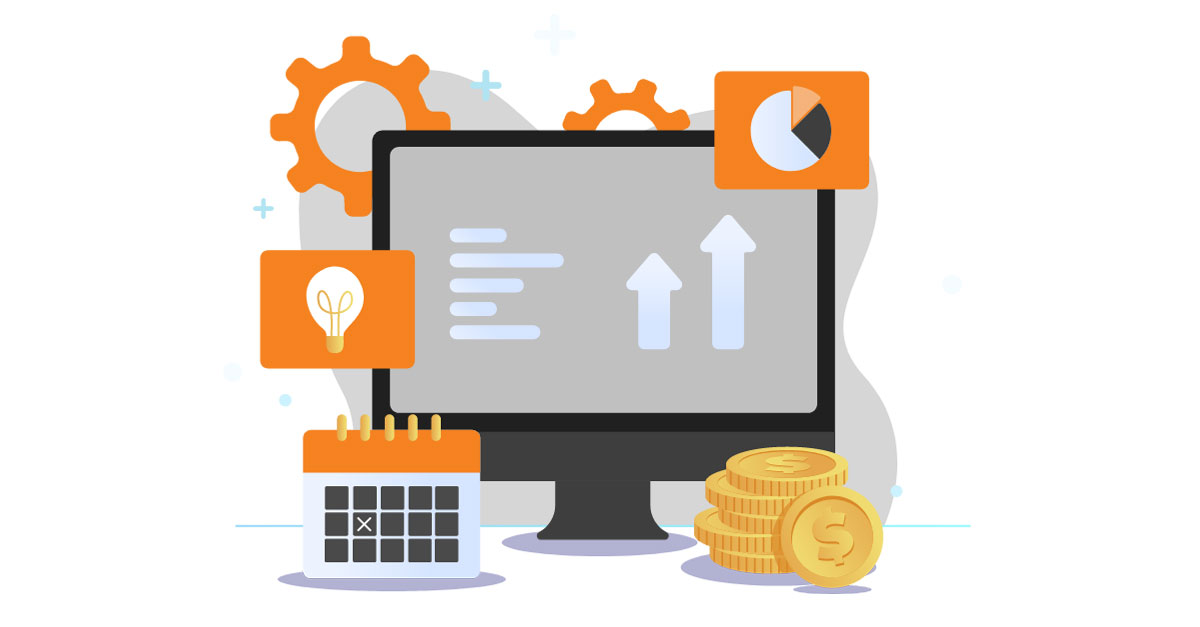Digital product owners or C-suite executives are analyzing how technological expenditures affect their organization’s bottom line. Therefore, for firms to produce noticeable outcomes within their corporation, they must either build custom software or acquire pricey digital solutions.
It is far more challenging to measure their financial impact when measuring ROI.
Are you planning to develop a SaaS application or software to meet your business needs? Then, you must define your income from the app and calculate your ROI.
Developing custom technology or licensing expensive software can be challenging. The foundation of every custom software project is ROI calculations. For CTOs who want to know with certainty whether new software solutions will be profitable, determining the investment’s worth is essential.
This metric makes informed company decisions more accessible, particularly if you want to win over stakeholders or investors.
This article explains how you can evaluate your technology decisions and measure their impact on your business.
Key Takeaways:
- Investment performance is measured by Return on Investment (ROI).
- Divide the investment’s net profit (or loss) by its initial cost or outlay to calculate ROI.
- Compare projects and assets using ROI to make apples-to-apples comparisons.
- ROI ignores the holding period or passage of time to overlook opportunity costs.
- When comparing something to other options, it should deliver a good ROI.
What is Return On Investment (ROI)?

An objective measurement of the value a corporation receives from its initial investment is called return on investment (ROI).
By creating software that generates more income than it costs to implement, the ultimate goal is to avoid a negative ROI. It is the return on an investment’s cost ratio to the return amount.
The net profit a company will make from deploying a custom software project is the return on investment.
It is simple to understand for retail businesses, where advantages are often realized through more sales. Other companies can associate the benefit with less waste or more effective procedures.
The benefit (or return) is divided by the investment cost to determine the return on investment (ROI). It uses ratios or percentages.
The original cost of a new software system and any additional expenses related to its deployment comprise the investment cost.
These cost factors include license fees, technical support, and the time spent training staff on new software.
Tip: Learning ROI refers to the knowledge acquired and retained due to education or training. Multiple niche forms of ROI will certainly be developed as the world progresses and the economy changes.
What is the best way to determine the ROI for your custom software product?
Businesses can calculate the ROI of their custom software project after carefully considering the elements in the final two sections (ROI). An explanation of the fundamental calculation is given below:
ROI = (Net Profit / Cost of Investment) x 100
ROI = (Present Value – Cost of Investment / Cost of Investment) x 100
To execute this equation, take the following actions:
1. Calculate the cost of investment
Consider all the expenses related to the development of the bespoke software when calculating the return on investment. The costs will cover hardware, setup, upkeep, learning, and support.
Include all annual operating expenses and any losses brought on by the performance of the software.
Divide your profit by the investment expense, then multiply the result by 100. The investment’s price less its present value, often known as the net profit, is the quantity that is usually mentioned.
The development should be displayed as a percentage.
2. Determine total savings & profit
Determine the total savings and profit that can be achieved through a custom software project. It is challenging to accomplish this at the beginning, especially starting.
Most organizations rely on assumptions when there is no complex data available. Consider if the new software has increased productivity, cheaper errors, more significant sales, or other sorts of profit or savings.
3. Calculate the ROI
Once you have determined the return on investment and the cost of investment, you should utilize the formula to determine the ROI of your bespoke software project.
An illustration is as follows:
450,000 / 300,000 x 100% = 150% ROI
The percentage value produced by a basic calculation is the ROI. This percentage evaluates the ROI of several investments to see which offers the most significant return.
This simplified illustration omits capital gains taxes and other costs related to purchasing or selling the shares.
To monitor your success, you must also choose key performance indicators. When automating organizations, key performance indicators must be carefully chosen.
Measurable Key Performance Indicators (KPIs) for ROI
Better Sales
The company’s purpose is to have higher bottom lines. You may start attributing the bespoke software if your company’s sales rise due to its execution.
Better Efficiency
Employee productivity is yet another factor to consider when calculating ROI. Custom software development can be held responsible for increased productivity if your workforce has been more productive since the program’s introduction that was developed specifically for them.
Enhanced Processes
Automation of business operations that results in increased agility, accuracy, and productivity should be attributed to custom software development.
Examine the cost of executing these procedures and the efficiency attained before/after software adoption to help with this.
Improved Production
Custom software development is responsible if automation has increased your company’s output.
It is because staff may concentrate on primary responsibilities like sales and marketing by automating repetitive tasks.
Better Savings
Reduced hardware requirements brought on by moving to the cloud or eliminating multiple software licenses are two ways to save costs.
You can look at your expenses to discover what savings have been made by the new software for the company directly and indirectly.
To Wrap Up
Although calculating the ROI of your software project may be challenging, you should make an effort to do so.
Even if you foresee a low return on your investment, you should still be able to pay for the cost of custom software development and profit from the new business process that results.
You must ensure that your product will satisfy internal stakeholders and investors as a product leader.
Using the above-mentioned formula, businesses will have a more informed conversation and be able to persuade individuals who are unsure that the investment is worthwhile.
Bring your ideas to life with our team of product developers.
Request Free Consultation
Summary
Kickstart Your Project With Us!
Popular Posts
CONTACT US
Let's Build Your Agile Team.
Experience Netsmartz for 40 hours - No Cost, No Obligation.
Connect With Us Today!
Please fill out the form or send us an email to







